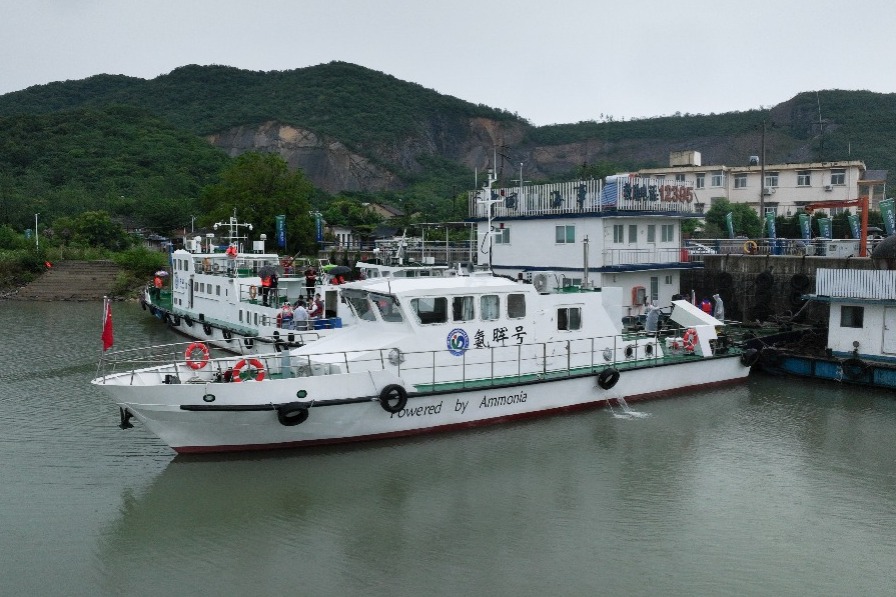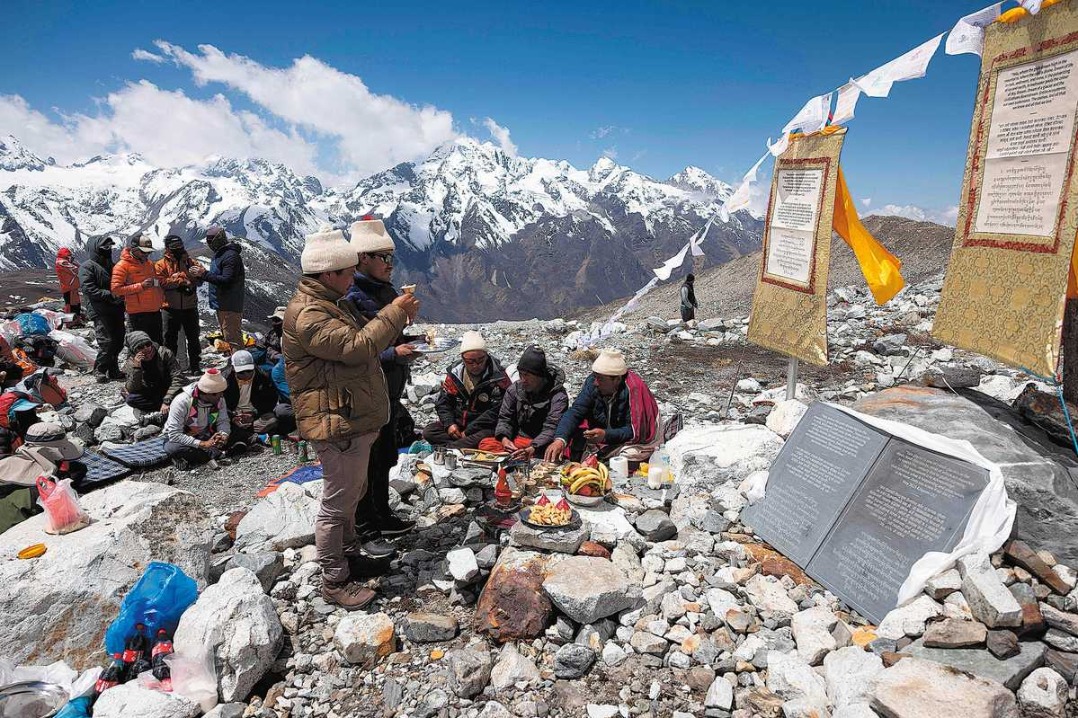Cleanly energized

China's third-generation nuclear power technology can play a big role in the global endeavor to achieve carbon neutrality

By the end of 2020, 27 countries and regions had put forward their carbon neutrality goals. China is one of them. But compared with the advanced economies, China's road to carbon neutrality is more difficult and challenging. On the one hand, fossil fuels account for 85 percent of China's total energy consumption, with coal, the fuel having the highest carbon intensity, accounting for 58 percent of its energy consumption. On the other hand, China is still experiencing medium-to-high speed of economic growth, with its energy sector expanding. The relatively high energy intensive industrial structure and expanding energy consumption are obstacles that China must overcome to achieve its carbon neutrality goal.
China is shifting to an energy mix with lower carbon intensity by investing heavily in clean energies such as wind, solar and hydro power. In 2019, the country's installed solar and wind power capacity was 204 and 210 gigawatts respectively. The solar and wind power combined made up for about 21 percent of the nation's total installed power capacity. However, the electricity generated by solar and wind power only accounted for 8 percent of the total, due to their instability and low operation hours. The use of hydropower is also constrained by its limited potential for development and the environmental protection pressure it faces.
In comparison, nuclear energy still has huge room for development in China. In 2019, the country's installed nuclear power capacity was 48 GW, accounting for just 2 percent of the total installed capacity. But it produced 5 percent of the country's electricity. With its high efficiency and low carbon emissions, nuclear energy could play a bigger role for China to achieve carbon neutrality.
When China started constructing its first nuclear power plant, the Qinshan Nuclear Power Plant, in 1983, the technologies and equipment used in the facility, including the reactor pressure vessel, were all imported, and the installed capacity was only 300,000 kilowatts. After more than three decades of development, China has rolled out Hualong One, its indigenous third-generation nuclear power technology. Hualong One meets the strictest safety standards in the world, with each unit having an installed capacity of 1.16 million kilowatts.
The 2011 Fukushima nuclear disaster in Japan greatly held back China's nuclear development. Coupled with a relatively abundant power supply, nuclear power in China has witnessed lukewarm growth over the past decade. However, China's nuclear power generation still expanded by around 10 percent annually. Currently, the country has a total installed nuclear power capacity of 52 GW in commercial operation, with another 19 GW under construction. The installed nuclear power capacity of the country is projected to hit 70 GW by 2025.
All the benefits of using nuclear power are based on safety. It is well known that a nuclear accident would not only bring huge economic losses, but also seriously hinder the progress of the whole industry. After the Three Mile Island nuclear accident and the Chernobyl disaster, major nuclear power countries have worked to develop safer standards, which resulted in the Utility Requirements Document (implemented in the United States) and the European Utility Requirements (implemented in Western Europe). The nuclear technologies that meet both the two safety standards are called third-generation nuclear technology. Hualong One, which is a third-generation reactor design, adopts a double-layer safety shell, and innovatively uses a combination of "active and passive" safety systems. Meeting the highest safety standards in the world, Hualong One marks a new milestone in terms of safety for China's nuclear power development.
Moreover, the first reactor unit using Hualong One design-Unit 5 of China National Nuclear Corp's Fuqing nuclear power plant in Fujian province-was put into operation on Jan 30, four months ahead of schedule-it only took 68 months for the project to be completed, making it world's first unit of a nuclear project using the third-generation nuclear technology to be put into commercial operation within the set schedule. Previously, construction of the first reactor units adopting third-generation nuclear technology was delayed without exception due to the difficulties brought by the application of new equipment and technology. For example, two units in Sanmen, Zhejiang province, using US nuclear giant Westinghouse's AP1000 nuclear reactor design and the nuclear plant in Taishan, Guangdong province, using the third-generation European pressurized reactor were finished four to five years behind schedule, causing huge financial losses. The timely completion of the first unit using Hualong One technology indicates that China has joined the ranks of global leaders in nuclear technology.
China needs nuclear power to realize the goal of carbon neutrality. With renewable energy resources such as wind, solar and hydro power facing different development bottlenecks and difficulties, nuclear power, which is clean and stable, offers an important alternative for China.
Globally, Hualong One technology, which is safe, efficient and cost-effective, provides a low-carbon power supply solution for countries plagued by electricity shortages, whose demands for energy in the medium run could otherwise not be met by other renewable energy sources. China has already received orders for its Hualong One reactor, marking a remarkable transition from "importing nuclear technology" to "exporting nuclear technology". It is foreseeable that with Hualong One's gradual improvement, nuclear power will become the choice of more and more countries.
The world needs nuclear power to achieve carbon neutrality. Currently, it is reported that a total of 72 countries are considering developing nuclear power, including 41 countries participating in the Belt and Road Initiative. Hualong One will surely help the world realize the imperative green transition.
The author is dean of China Institute for Energy Policy Studies at Xiamen University. The author contributed this article to China Watch. The views do not necessarily reflect those of China Daily.
The opinions expressed here are those of the writer and do not necessarily represent the views of China Daily and China Daily website.
If you have a specific expertise and would like to contribute to China Daily, please contact us at opinion@chinadaily.com.cn, and comment@chinadaily.com.cn.

































